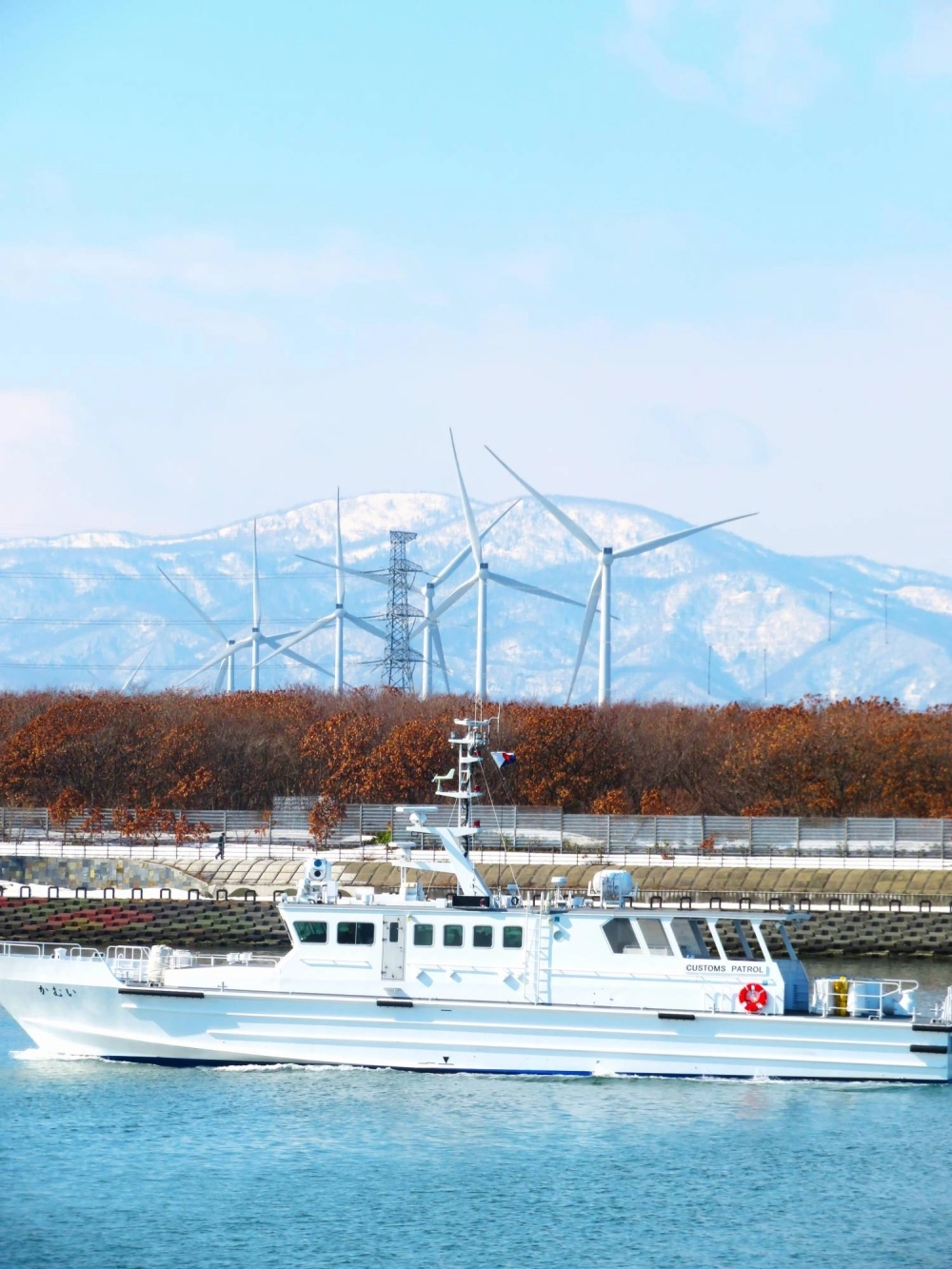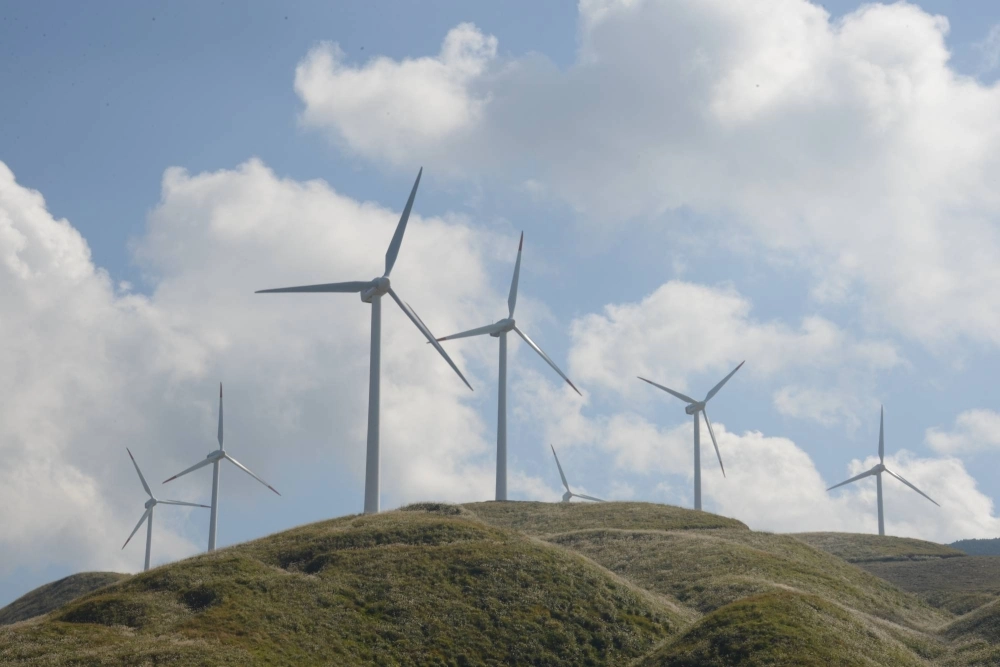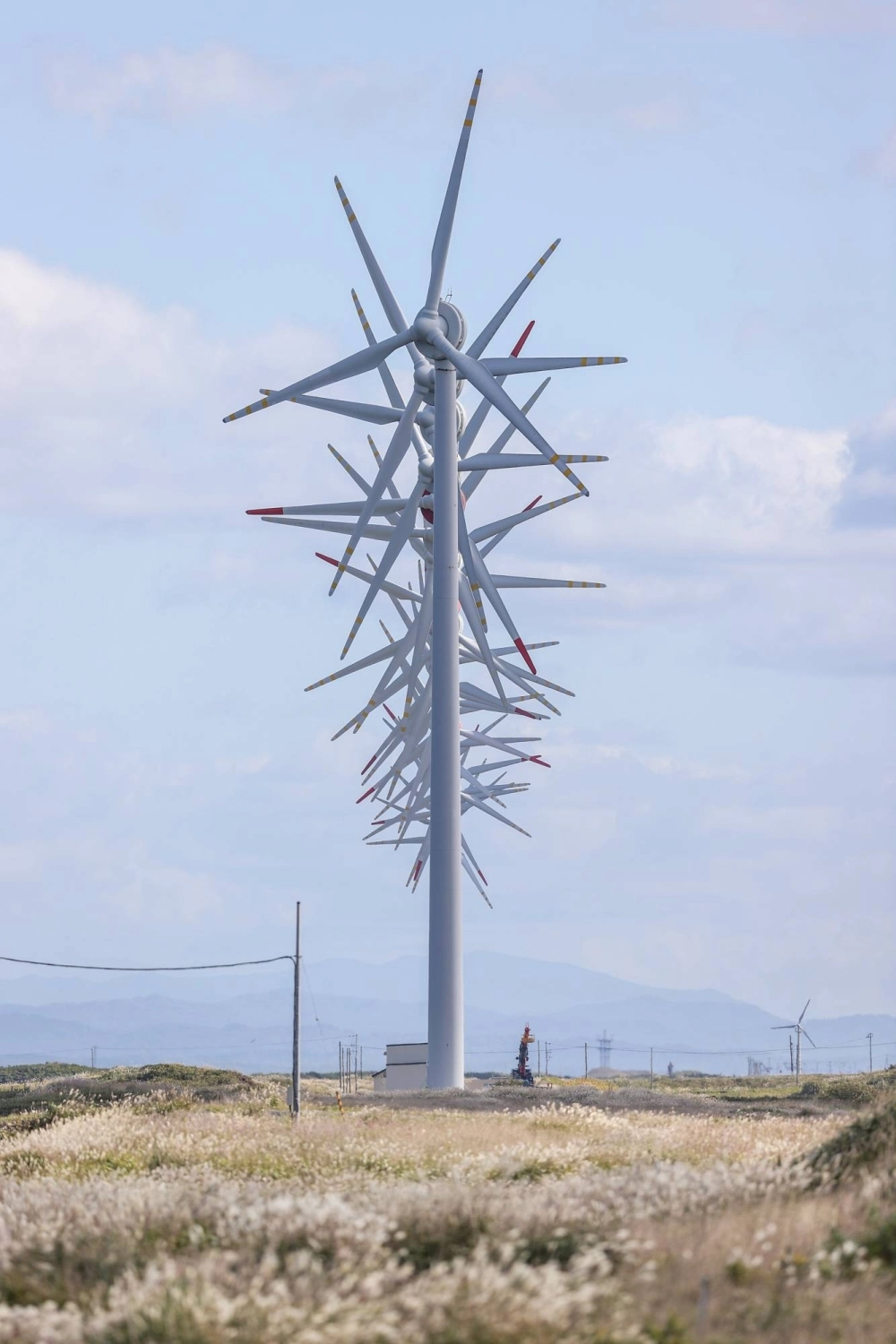About a 40-minute drive to the north from central Sapporo lies the Sea of Japan port of Ishikari, a city rich in biodiversity that now finds itself at the heart of a fierce debate over wind power as Japan scrambles to decarbonize its energy sector.
In a sense, Ishikari represents the idealized version of Hokkaido for many Japanese as well as for foreign tourists: Its coastal waters are famous for their seafood, while the city’s nature trails and parks are home to dozens of varieties of flowers. Rare bird species, including the white-tailed eagle (ojirowashi), known among the Indigenous Ainu as onneu, or the “old one,” also make this area home.
But the future of the eagle — a designated Japanese natural monument and a threatened species — as well as Ishikari's other flora and fauna are the subjects of growing concern among local environmental activists. That’s because in addition to attracting wildlife and people looking to connect with nature, Ishikari is also attracting offshore wind power projects, whose development, activists fear, will lead to irreversible environmental damage.
In May of last year, the offshore area of Ishikari was designated by the central government as a "promising area" for wind power generation. However, this area overlaps with the environmental conservation area on a wind power generation zoning map set by the city in 2019.
“The Ishikari Bay area is a route for migratory birds in spring and fall, and there is concern about the wind turbines leading to bird strikes,” says Naoko Kasuya, co-director of an Ishikari citizens group that opposes the construction. “There are also worries about the loss of abundant fishery resources, especially the impact the turbines would have on fishermen along the coast.”
In addition, she adds, residents are concerned the sight of wind turbines in the bay could have a negative impact on Ishikari’s scenery, damaging the local environmental tourism industry.
While climate scientists are urging the world to rapidly ditch fossil fuels and scale up clean forms of energy like wind, studies show that environmental concerns over offshore wind farms are not completely unfounded.
A 2022 study published in Nature on the ecological impacts of offshore wind farms noted that they varied depending on the environmental characteristics of specific areas — characteristics which included the presence of migrating bird species. The study said that impacts also depend on the initial state and resilience of the area where offshore wind farms are located, with the degree differing dramatically for some ecosystem elements, including in positive ways for some species and negative ways for others.
Scaling up wind power
The concerns among residents in Ishikari about the environmental impact of wind power are being raised almost three years after Japan finalized its basic energy plan for 2030, in which it targeted a share of 36% to 38% for renewables.The target for on- and offshore wind power was set at 5% of the total supply, up from just 0.7% in 2019. Key to that goal are projects in Ishikari and elsewhere that continue to be announced.
The Japan Wind Power Association noted that at the end of 2022, the country had a cumulative installed capacity of 4,802 megawatts — equivalent to roughly four modern nuclear reactors.
Of this amount, just 135 MW came from offshore wind farms. But much more is planned for not only Hokkaido but also in Akita, Iwate, Chiba and Nagasaki prefectures, and other coastal areas where the meteorological conditions are judged to be best for effective wind power.

Local governments promoting terrestrial and offshore (including fixed and floating) wind farm projects offer two basic arguments for building them. The first is that they are a necessary method of helping to reduce Japan’s emissions to fight global warming and meet carbon reduction goals. The second is that they'll attract new investment and jobs, and revive the local economy in parts of the country where the populations are rapidly aging and declining.
At a December symposium in Sapporo on offshore wind and local community participation, municipal representatives from several cities in Hokkaido and Nagasaki spoke about the urgent need to persuade local communities, especially powerful local fishing unions that have legal rights to coastal seas, to accept wind projects by detailing their benefits.
“Reaching an agreement with the local fishing unions is most important. In Goto, we met with fishing union representatives countless times to secure permission for the related work needed for the wind turbines,” said Yuki Kawaguchi, a municipal official involved with renewable energy projects in the Nagasaki Prefecture city.
In Goto’s case, however, the future of offshore wind means floating turbines, rather than those that are fixed to the seabed. With floating projects presenting additional hurdles, the start of the city’s 16.8 MW wind project, originally scheduled to begin this month, has been delayed until January 2026 due to technical problems.
In Akita Prefecture, Japan’s first large-scale offshore wind farm began operations in December 2022, and by the end of January 2023, a second Akita facility had come online. A total of 33 wind turbines generate around 140 MW of electricity, enough to supply 130,000 households.
Last month, local activists sent letters of protest to Akita officials, expressing concern about the potential effect on the ocean environment and saying that only the economic effects of the project were considered.
Meanwhile, new wind projects continue to be announced as Japan moves forward to meet its goal of increasing offshore wind power capacity to 10 GW by 2030, with further goals of reaching 30 GW to 45 GW by 2040.
Last month, a 315 MW project in Akita, a 684 MW project in Niigata and a 420 MW project in Nagasaki were approved by the central government. All are fixed wind farms and are scheduled to begin operations between June 2028 and August 2029.
Japan’s efforts to ramp up offshore wind power, in particular, are part of a larger international effort to embrace the energy source. At a meeting in Hiroshima last May, Group of Seven leaders pledged to collectively increase offshore wind capacity by 150 GW by 2030.
Yet in Ishikari, those questioning the wisdom of great increases in offshore wind also point to another international goal agreed to by world leaders in Hiroshima: achieving the target of effectively conserving and managing at least 30% of terrestrial and inland water areas and at least 30% of marine and coastal areas by 2030, nationally and globally, and halting and reversing biodiversity loss by that same year.
The path ahead
Issues stemming from disagreements and negotiations with local residents and fishers’ groups come on top of recent industry woes. Over the past few years, the cost of wind turbines has risen due to a spike in the cost of building materials, which has led to delays and cancellations of projects in Japan and abroad.
Yet the need to decarbonize the energy sector is more pressing than ever.
Scientists warn that climate change will be irreversible for hundreds of years unless the world takes immediate action to curb emissions by quitting fossil fuels. As a renewable energy source, wind power is expected to play a key role in helping reach that goal.
But without taking into account legitimate environmental concerns, efforts to expand wind in local communities around the world could face stiff local opposition, resulting in longer delays in their implementation — if they are even built. The other risk is forcibly building them, only to discover they create excessive environmental damage that further turns the public against them.
That said, there are some recent successful overseas examples of wind farm projects balancing environmental concerns with developers’ plans.
In 2022, three environmental groups and the developers of an offshore wind farm off the coast of the northeastern U.S. struck a deal to ensure the protection of North Atlantic right whales, a critically endangered species.
“We don’t need to choose between clean energy development and wildlife protection, and this agreement shows how we can do both,” said Alison Chase, a senior policy analyst at the NRDC, according to the Associated Press.
The Nature study concludes by advocating for more analysis on the positive and negative effects of offshore wind, noting that the implementation of machine-learning and modeling tools can be used to better assess the risks of offshore wind projects.
“Such tools are to be further integrated into decision-support tools to identify future deployment areas, inform the consent process, and contribute to making the (offshore wind energy) sector more environmentally sustainable,” the study says.
Regardless of the position on wind power, there is support on both sides for one thing: more research.
Makoto Chikira, an honorary professor at Chuo University and Ishikari resident who is also opposed to the wind power turbines planned for the city, says that what is needed is more thought and scientific analysis about the demerits of offshore wind turbines to coastal biodiversity, especially by government agencies and businesses who are pushing the technology as a way to curtail global warming.
“Supporters of wind power say that the issue of climate change is more important to all of us and that's why we need wind power, but they don't study any of the environmental damage they do,” he says.
“It’s critical to objectively explain how much wind power generation can destroy the natural environment.”























With your current subscription plan you can comment on stories. However, before writing your first comment, please create a display name in the Profile section of your subscriber account page.